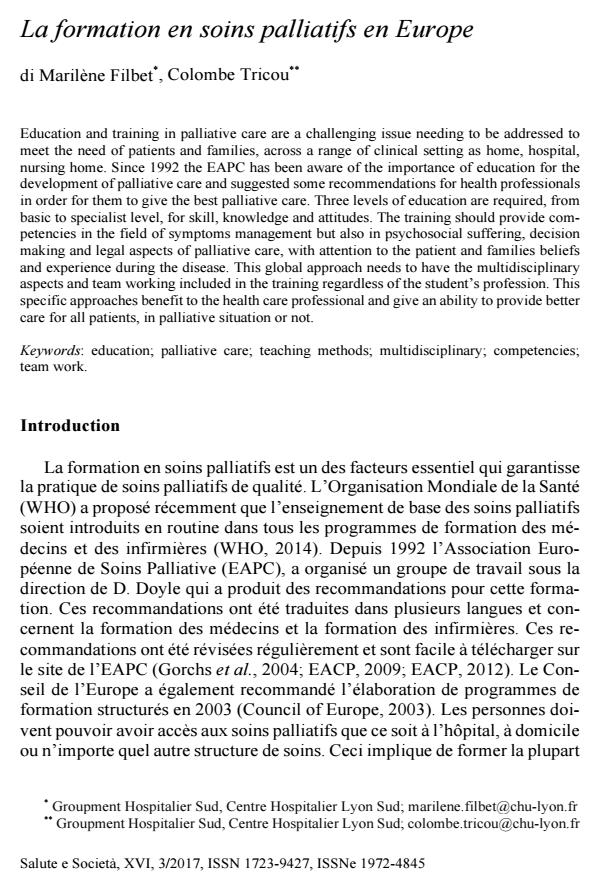La formation en soins palliatifs en Europe
Titolo Rivista SALUTE E SOCIETÀ
Autori/Curatori Marilène Filbet, Colombe Tricou
Anno di pubblicazione 2017 Fascicolo 2017/3
Lingua Francese Numero pagine 10 P. 21-30 Dimensione file 60 KB
DOI 10.3280/SES2017-003003
Il DOI è il codice a barre della proprietà intellettuale: per saperne di più
clicca qui
Qui sotto puoi vedere in anteprima la prima pagina di questo articolo.
Se questo articolo ti interessa, lo puoi acquistare (e scaricare in formato pdf) seguendo le facili indicazioni per acquistare il download credit. Acquista Download Credits per scaricare questo Articolo in formato PDF

FrancoAngeli è membro della Publishers International Linking Association, Inc (PILA)associazione indipendente e non profit per facilitare (attraverso i servizi tecnologici implementati da CrossRef.org) l’accesso degli studiosi ai contenuti digitali nelle pubblicazioni professionali e scientifiche
Education and training in palliative care are a challenging issue needing to be addressed to meet the need of patients and families, across a range of clinical setting as home, hospital, nursing home. Since 1992 the EAPC has been aware of the importance of education for the development of palliative care and suggested some recommendations for health professionals in order for them to give the best palliative care. Three levels of education are required, from basic to specialist level, for skill, knowledge and attitudes. The training should provide competencies in the field of symptoms management but also in psychosocial suffering, decision making and legal aspects of palliative care, with attention to the patient and families beliefs and experience during the disease. This global approach needs to have the multi-disciplinary aspects and team working included in the training regardless of the student’s profession. This specific approaches benefit to the health care professional and give an ability to provide better care for all patients, in palliative situation or not.
Parole chiave:Education; palliative care; teaching methods; multidisciplinary; competencies; team work.
Marilène Filbet, Colombe Tricou, La formation en soins palliatifs en Europe in "SALUTE E SOCIETÀ" 3/2017, pp 21-30, DOI: 10.3280/SES2017-003003